Hola comunidad HIVE, hoy quiero compartir con ustedes la elaboración de un alimento tan beneficioso para nuestra salud que ha sido llamado por algunos "superalimento", se trata de los germinados.
Hello HIVE community, today I want to share with you the elaboration of a food so beneficial for our health that has been called by some "superfood", it is the sprouts.
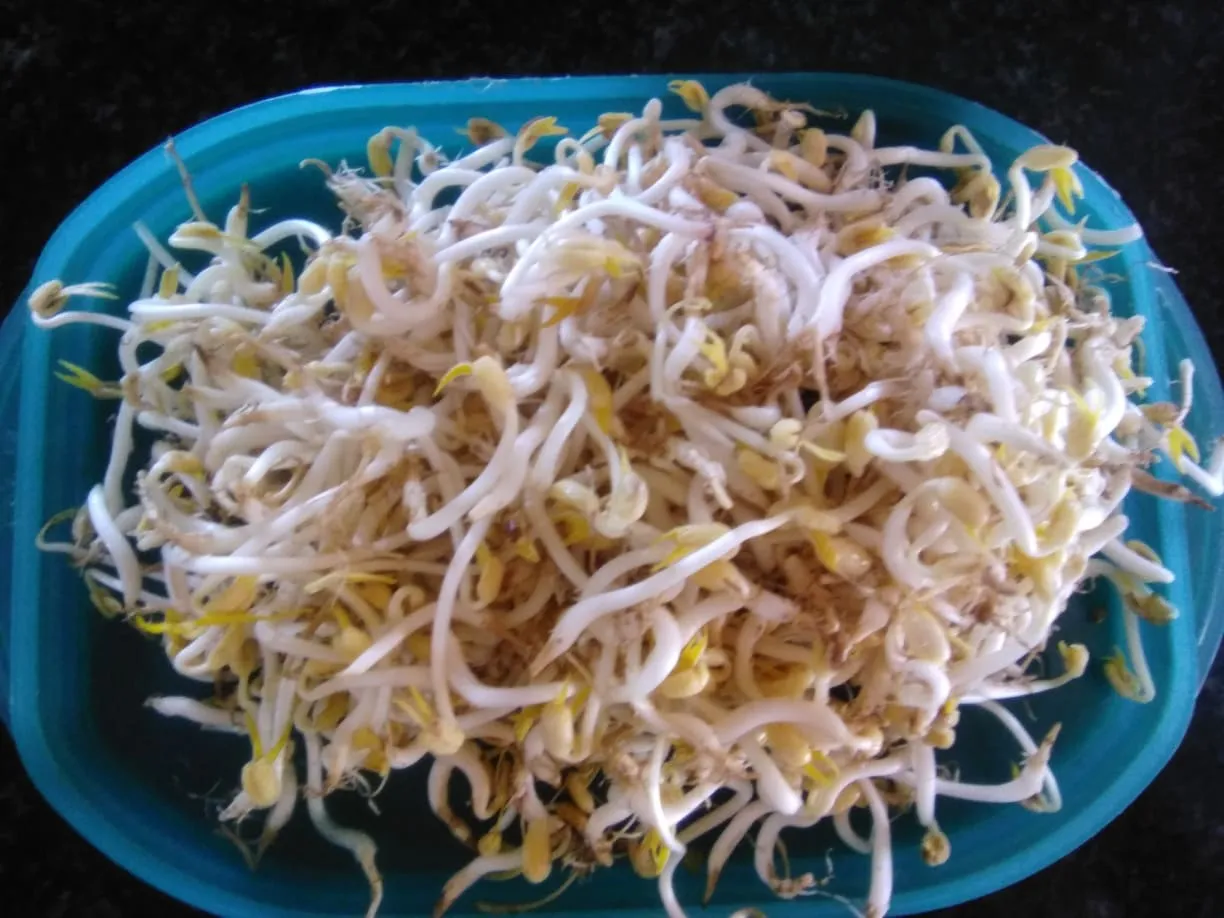
Se pueden hacer germinados a partir de cualquier grano, pero en esta oportunidad utilizaremos el frijol chino
Sprouts can be made from any bean, but this time we will use the Chinese bean.
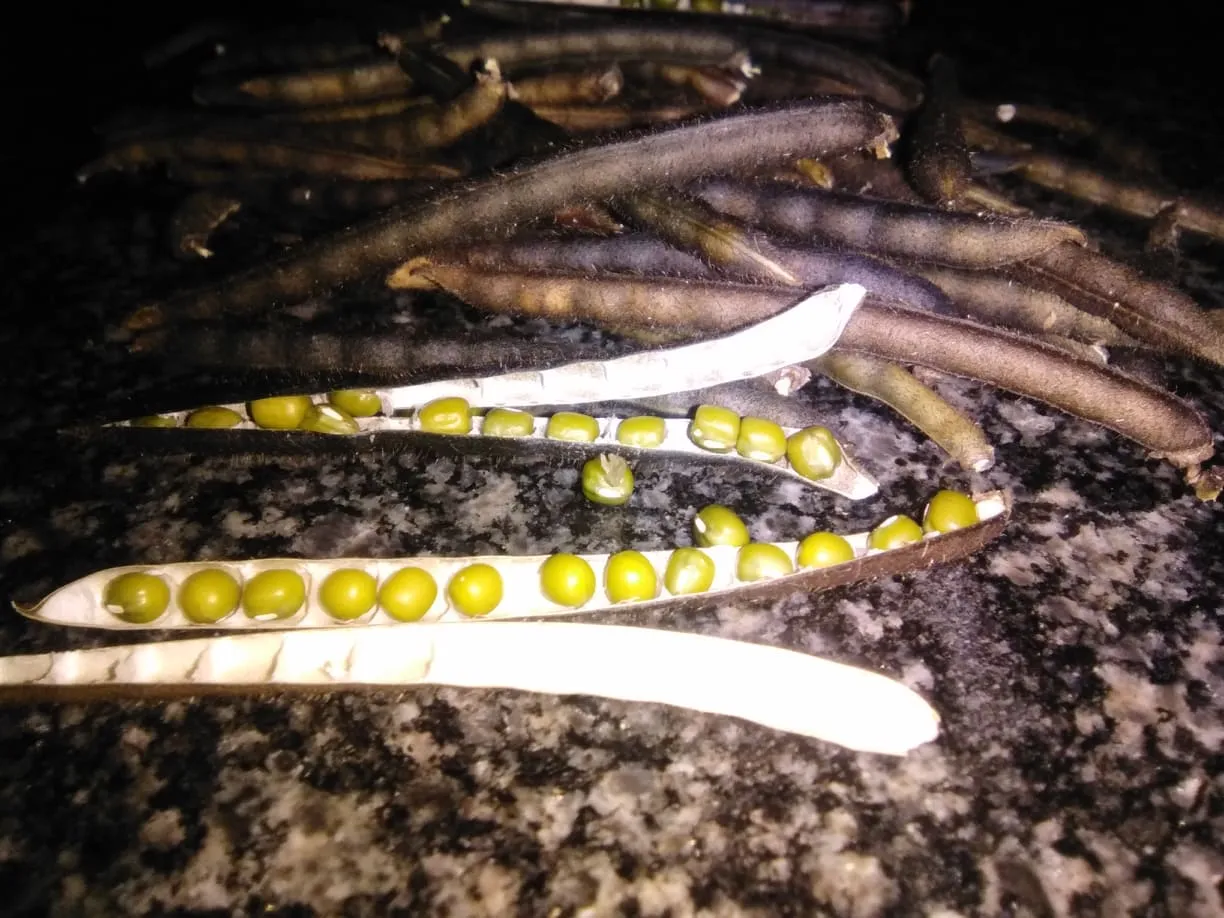
FRIJOLES CHINOS/CHINESE BEANS
En mi presentación comenté que durante el tiempo libre por la cuarentena me dediqué a limpiar y sembrar el terreno detrás de mi casa para convertirlo en un huerto productivo, cuando tuve oportunidad sembré algunos de estos granos en mi huerto para asegurar siempre poder contar con ellos para hacer mis germinados ya que donde vivo no se consiguen fácilmente, particularmente tengo como un año sin verlos en ningún supermercado.
In my presentation I mentioned that during my time off for the quarantine I dedicated myself to clean and sow the land behind my house to turn it into a productive garden, when I had the opportunity I sowed some of these grains in my garden to ensure that I could always count on them to make my sprouts since where I live they are not easily available, particularly I have about a year without seeing them in any supermarket.

PLANTA DE FRIJOL CHINO/CHINESE BEAN PLANT
Estos granos son de fácil cultivo, son plantas pequeñas, sus vainas verdes se van tornando oscuras y cuando este negra quiere decir que el grano esta listo y podemos retirarla de la planta. Para conocer un poco más acerca de ellos les cuento que provienen de Asia y la India donde son cultivados hace miles de años, allí se utilizaban como sustituto de la carne cuando esta escaseaba. Su cultivo luego se extendió al resto de Europa y actualmente son cultivados en todo el mundo.
These grains are easy to grow, they are small plants, their green pods become dark and when they are black it means that the grain is ready and we can remove it from the plant. To know a little more about them I tell you that they come from Asia and India where they are cultivated thousands of years ago, there they were used as a substitute for meat when it was scarce. Their cultivation then spread to the rest of Europe and nowadays they are cultivated all over the world.
Los frijoles chinos son ricos en nutrientes y al germinarlos multiplican su valor nutritivo, algunos de sus beneficios son:
-Contienen fitoestrógenos que son protectores cardivasculares
-Son ricos en vitamina C, lo que fortalece el sistema inmune
-Contribuyen a regenerar la flora intestinal.
-Contienen fibra y proteinas.
The chinese beans are rich in nutrients and when germinated they multiply their nutritional value, some of their benefits are:
-They contain phytoestrogens that are cardivascular protectors.
ares
-They are rich in vitamin C, which strengthens the immune system.
-They contribute to regenerate the intestinal flora.
-They contain fiber and proteins.
Generalmente estos germinados se utilizan como ingrediente para el arroz frito chino, pero podemos consumirlos en ensaladas, guisos, estofados etc.
Recomiendo colocarlos siempre de último en las preparaciones que requieran calor (1 a 2 minutos antes de retirar de cocción) para que no se cocinen mas de lo necesario y conserven sus propiedades
these sprouts are used as an ingredient for Chinese fried rice, but they can also be used in salads, stews, casseroles, etc.
I recommend to always place them last in preparations that require heat (1 to 2 minutes before removing from cooking) so that they do not cook more than necessary and retain their properties.
Vamos a su preparación, necesitamos:
-Un envase de vidrio o plástico de 20cm de alto y 10 de ancho aproximadamente
-100 gr de frijoles chinos
-Agua
-tela negra (si no tenemos un lugar totalmente oscuro)
-liga o pabilo
-colador
Let's go to its preparation, we need:
-A glass or plastic container of 20cm high and 10cm wide approximately.
-100 gr of Chinese beans
-Water
-black cloth (if we don't have a totally dark place)
-wick or wick
-strainer
Preparación:
Lavamos bien los frijoles y los dejamos remojando de 5 a 7 horas en suficiente agua (cubrir algo mas del doble de la altura que ocupen los frijoles) para que se hidraten y así germinen mas rápido.
Preparation:
Wash the beans well and let them soak for 5 to 7 hours in enough water (cover a little more than twice the height of the beans) to hydrate and germinate faster.

AQUI LOS FRIJOLES YA HIDRATADOS AL ESTAR EN REMOJO DURANTE 6 HORAS
HERE THE BEANS ALREADY HYDRATED BY SOAKING FOR 6 HOURS
En la mañana siguiente con la ayuda de un colador les retiramos el agua del remojo, los enjuagamos y escurrimos muy bien para que no vayan quedar pozos de agua dentro del envase ya que estos pequeños estancamientos de agua pueden causar podredumbre.
The following morning, with the help of a strainer, we remove the soaking water, rinse them and drain them very well so that no water pools remain inside the container, since these small water stagnations can cause rotting.

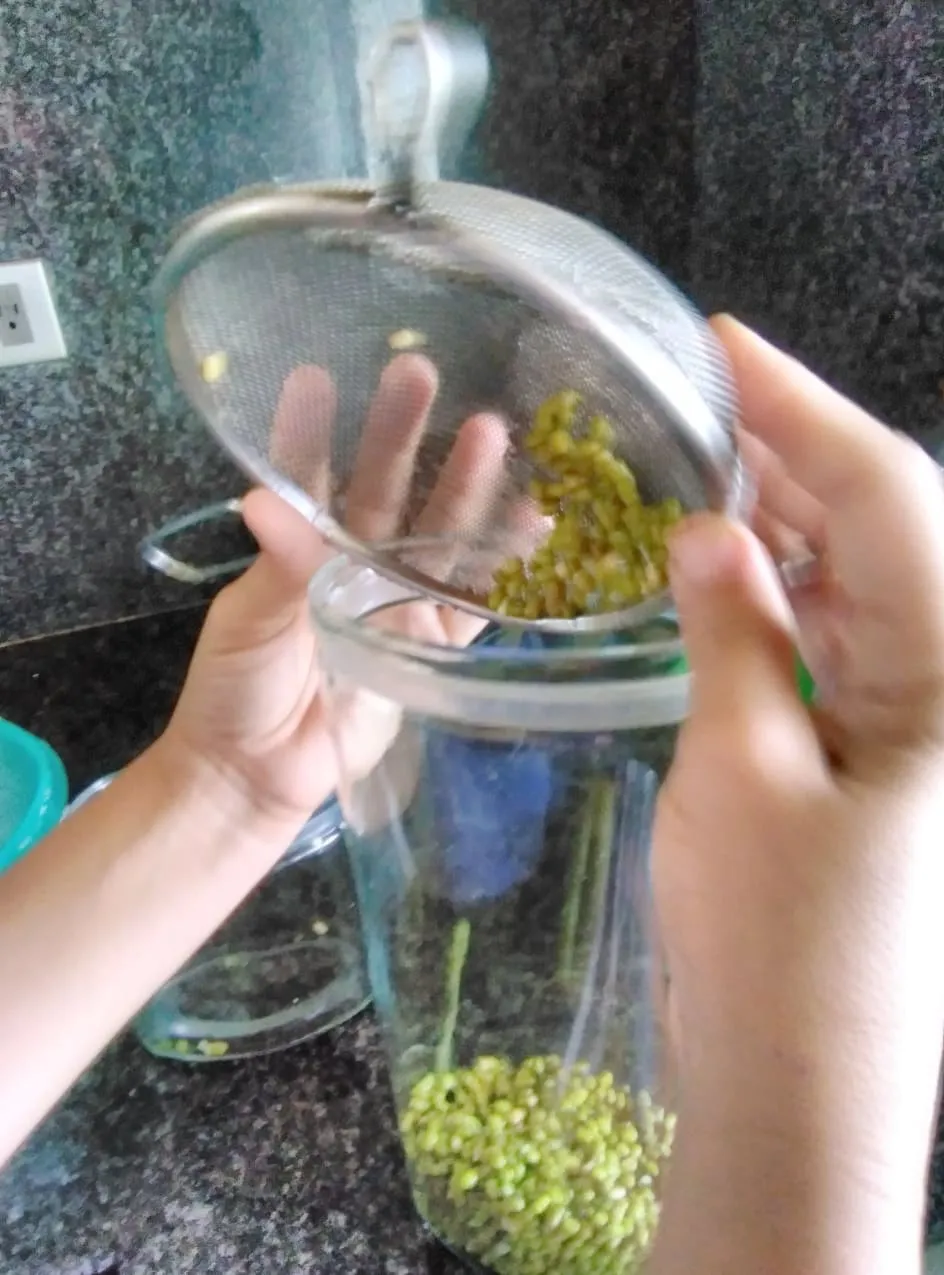
En mi caso los cambie de envase por otro mas alto ya que al crecer los germinados ocupan bastante espacio, sin embargo se pueden poner a remojar de una vez en un envase grande.
In my case, I changed the container for a taller one because the sprouts take up a lot of space when they grow, but they can be soaked at once in a large container.
Después de poner los frijoles escurridos en el envase lo cubrimos todo con una tela oscura ( en caso que no tengas algún lugar lo suficiente oscuro) y lo aseguramos con una liga o pabilo en la boca del envase, esto es para evitar la entrada de alguna plaga o insecto al envase y lo dejamos en un lugar cálido hasta el día siguiente ( en lugares donde la temperatura sea muy fría debemos buscar un lugar lo menos frío posible).
After putting the drained beans in the container we cover it all with a dark cloth (in case you do not have a place dark enough) and secure it with a rubber band or wick in the mouth of the container, this is to prevent the entry of any pest or insect to the container and leave it in a warm place until the next day (in places where the temperature is very cold we must find a place as little cold as possible).
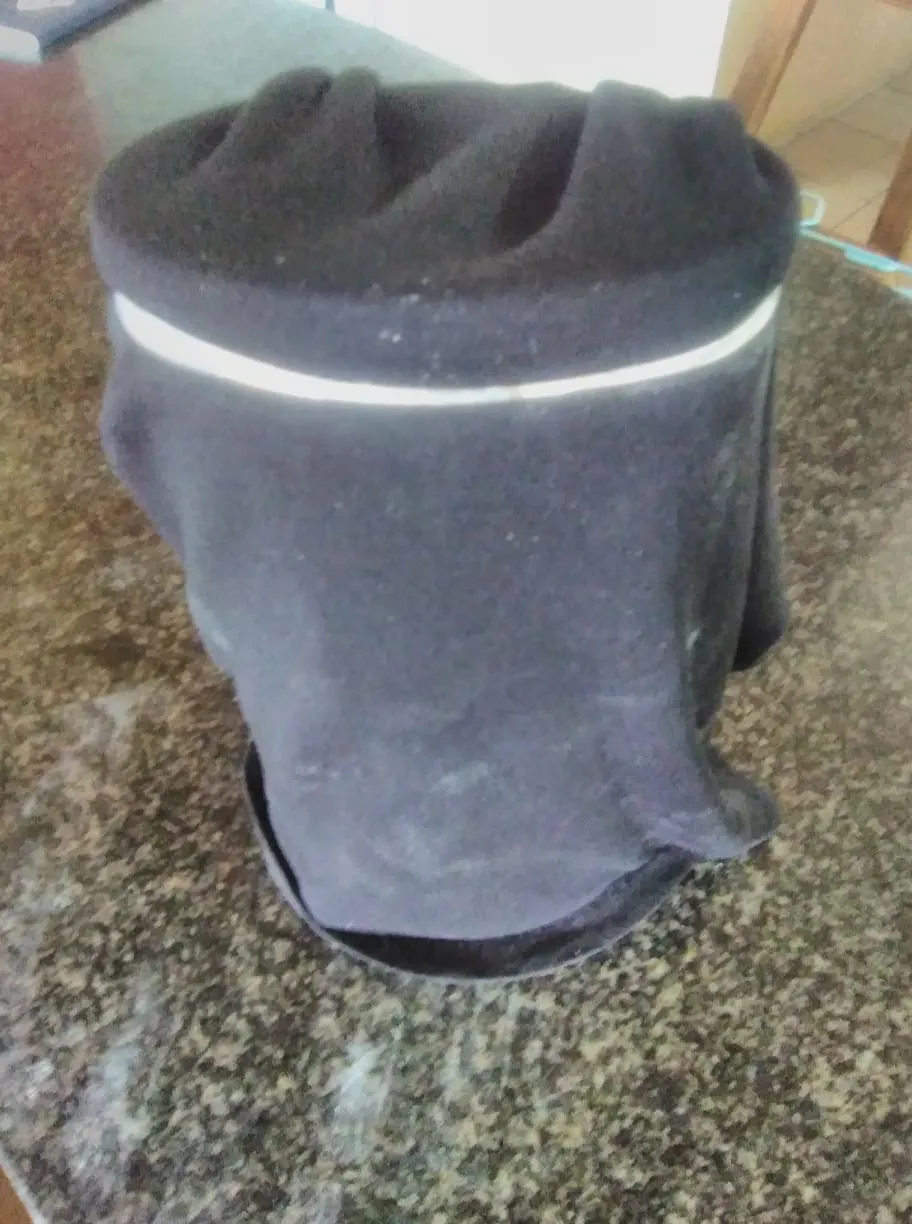
En el primer día ya debemos notar que inició la germanización, destapamos el envase, cubrimos los frijoles con agua para enjuagarlos, luego desechamos esa agua y escurrimos bien, volvemos a dejar los frijoles ya escurridos en el envase, cubrimos con la tela oscura nuevamente y dejamos en un lugar cálido y con menos luz posible hasta en día siguiente
On the first day we should notice that the germanization started, we uncover the container, cover the beans with water to rinse them, then we discard the water and drain well, we put the drained beans back in the container, cover with the dark cloth again and leave in a warm place with less light until the next day.
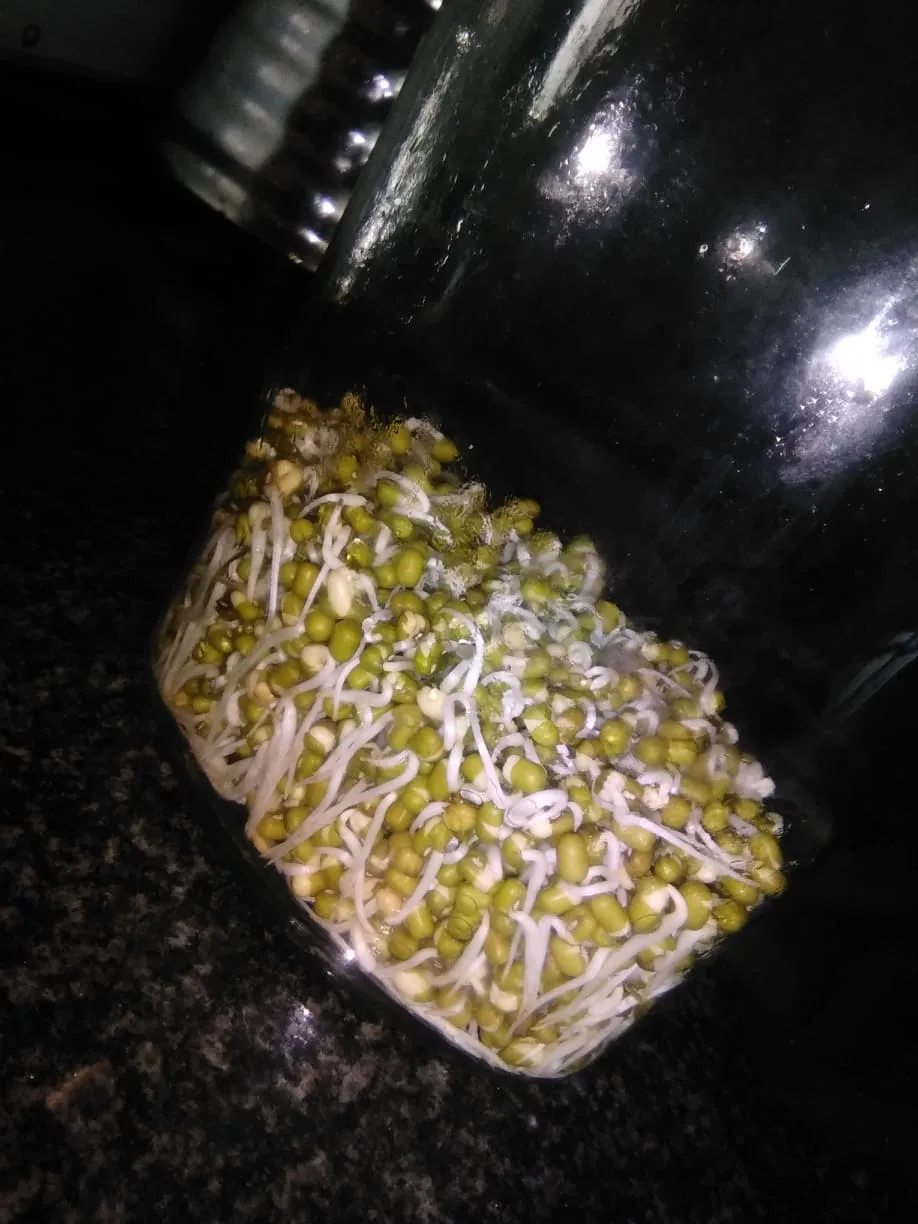
PRIMER DIA DE GERMINACIÓN
FIRST DAY OF GERMINATION
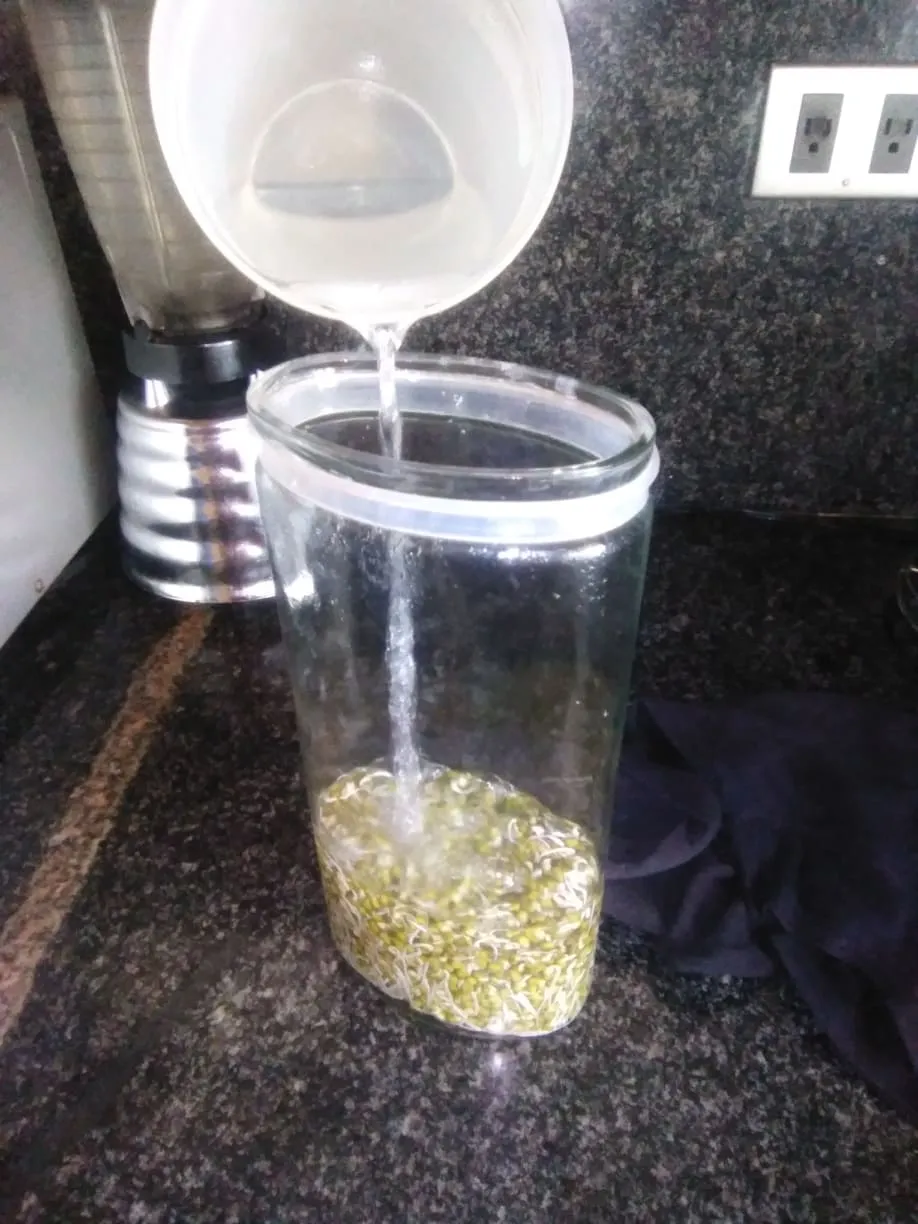
PONEMOS AGUA
WE PUT WATER
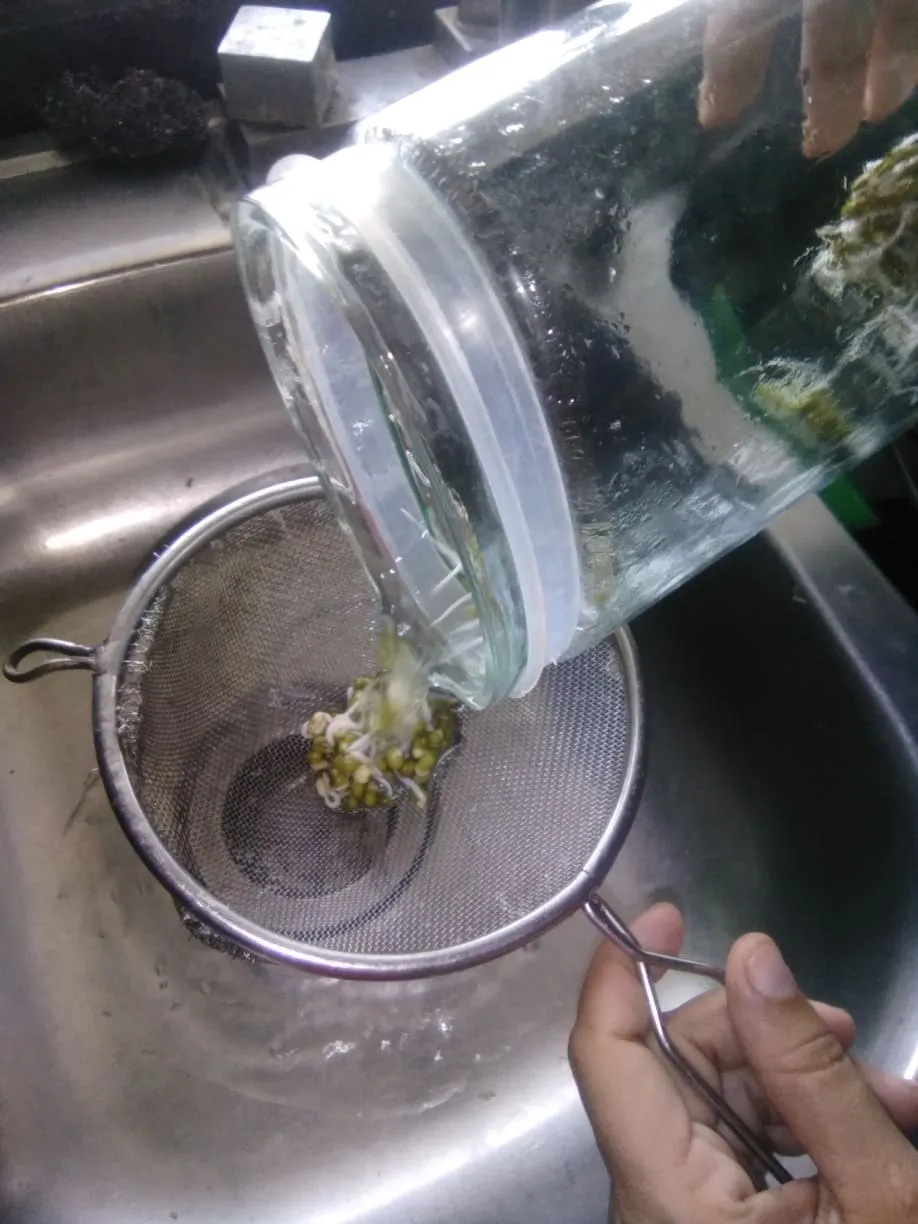
COLAMOS
QUAIL
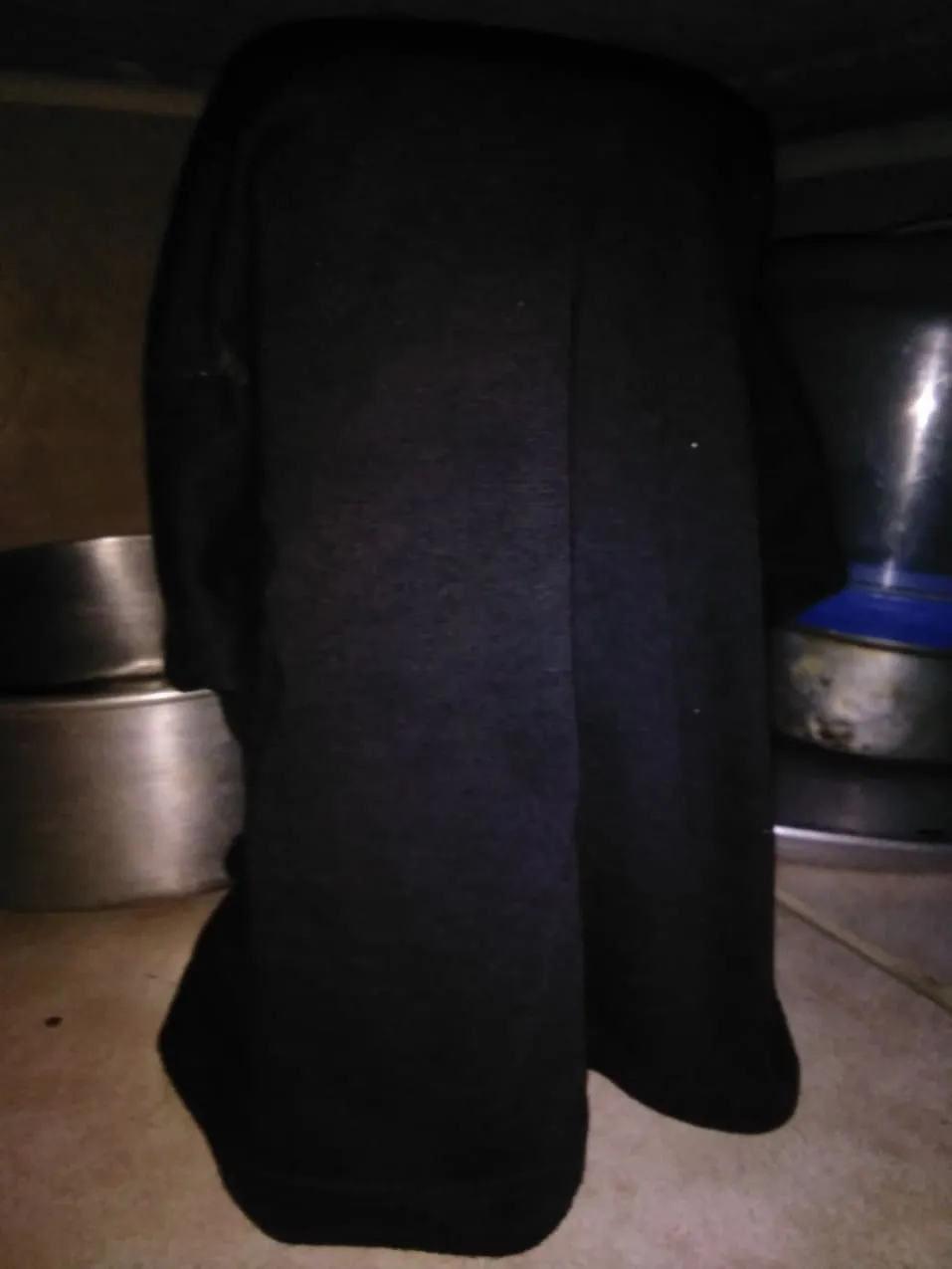
TAPAMOS NUEVAMENTTE Y DEJAMOS HASTA EL DIA SIGUIENTE
COVER AGAIN AND LEAVE UNTIL THE NEXT DAY.
ESTE MISMO PROCEDIMIENTO SE REPITE DURANTE LOS PRÓXIMOS 5 DÍAS
THIS SAME PROCEDURE IS REPEATED OVER THE NEXT 5 DAYS
A continuación veremos el crecimiento de los germinados durante este proceso:
Next we will see the growth of the sprouts during this process:
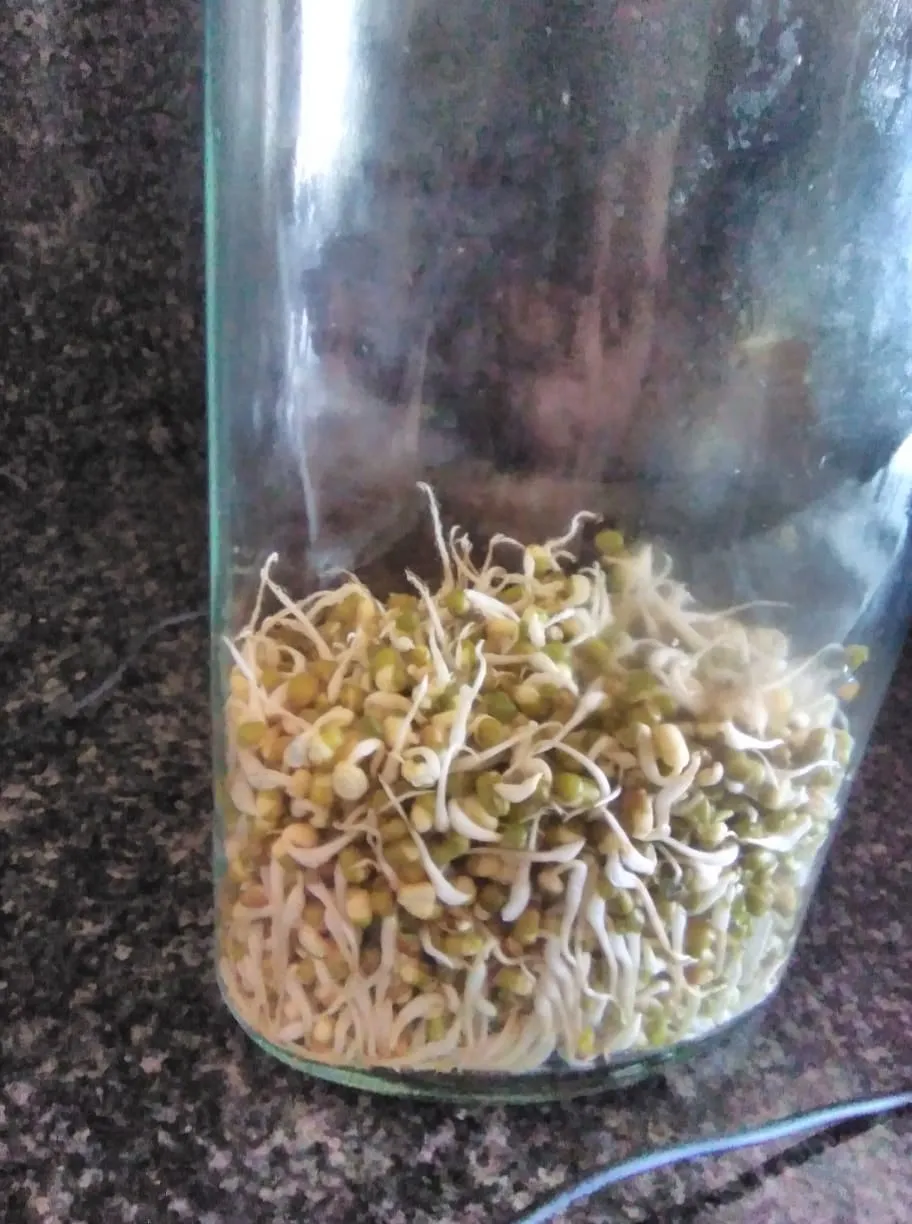
SEGUNDO DIA DE GERMINACIÓN
SECOND DAY OF GERMINATION
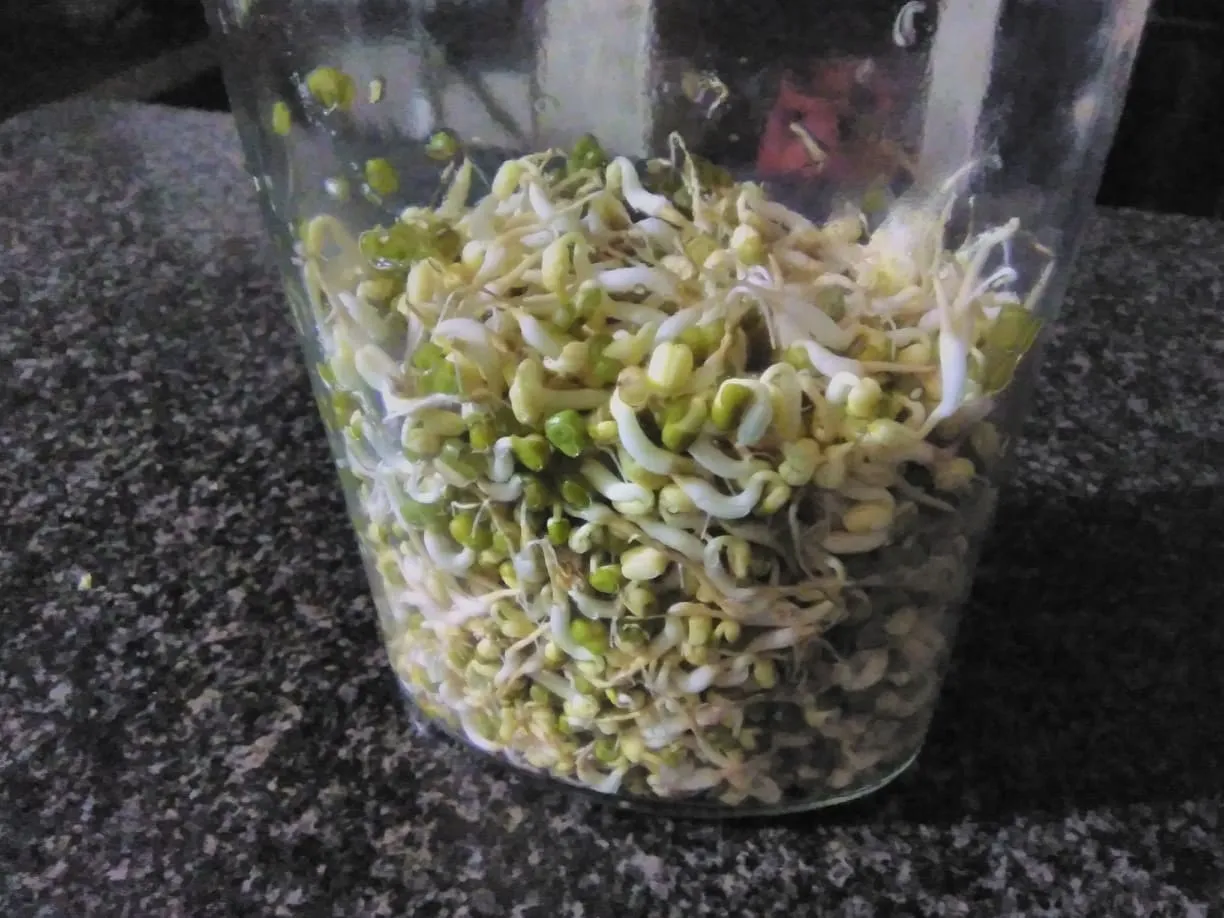
TERCER DIA DE GERMINACIÓN
THIRD DAY OF GERMINATION
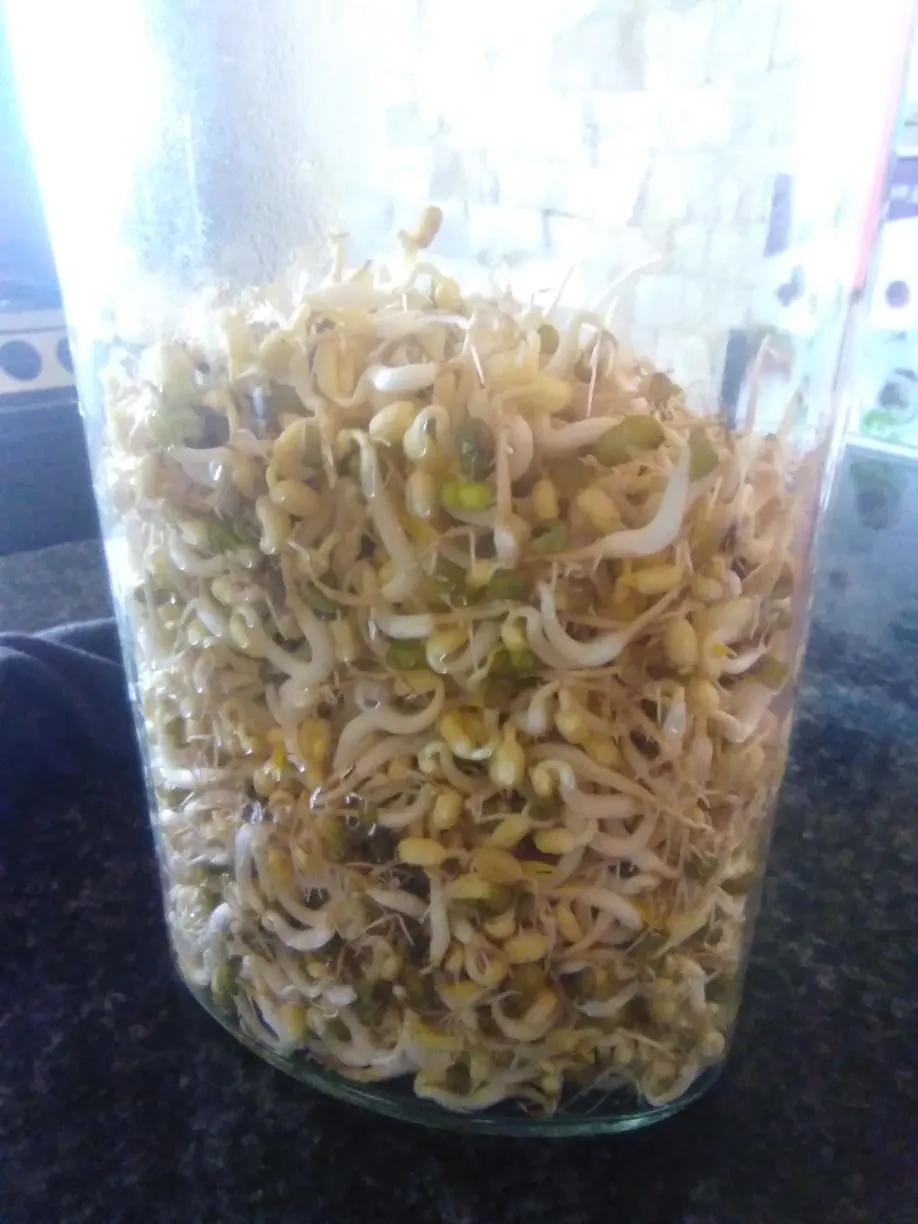
CUARTO DIA DE GERMINACIÓN
FOURTH DAY OF GERMINATION
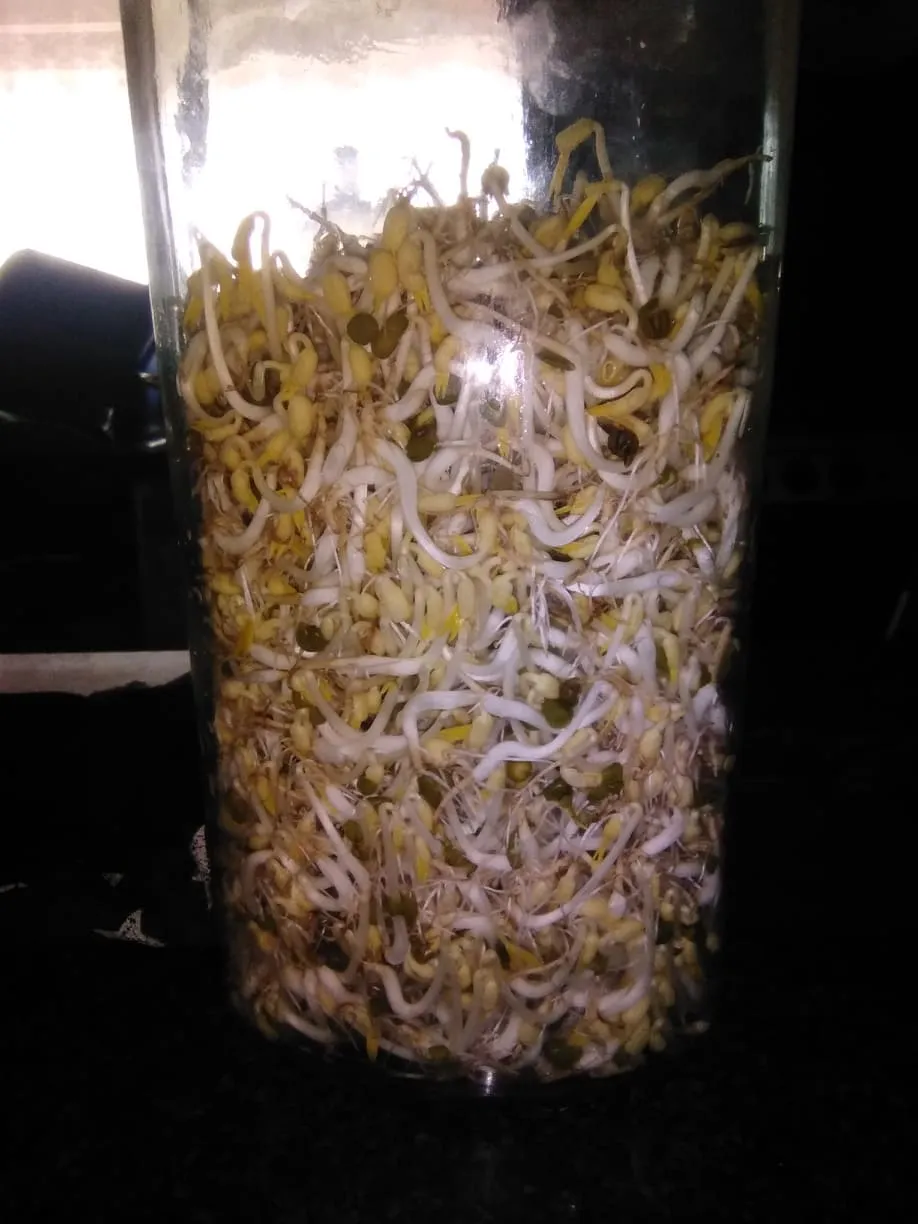
QUINTO DIA DE GERMINACIÓN
FIFTH DAY OF GERMINATION
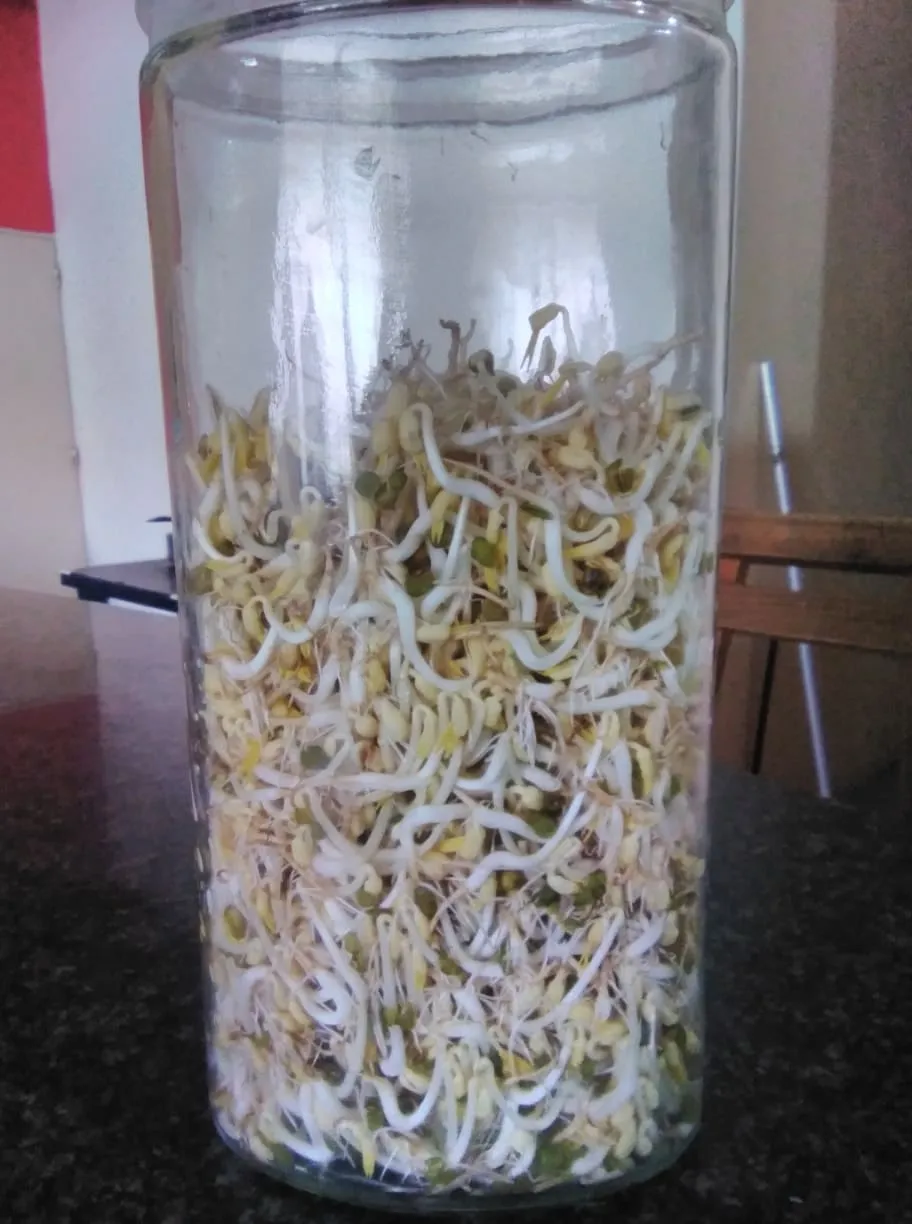
SEXTO DIA DE GERMINACIÓN
SIXTH DAY OF GERMINATION
Ahora procedemos a sacarlos del frasco los colocamos en un envase y llenamos con agua para lavarlos y retirarle las cascaras verdes que se desprendieron del grano durante la germinación
Now we proceed to remove them from the jar, place them in a container and fill them with water to wash them and remove the green hulls that were detached from the grain during germination.
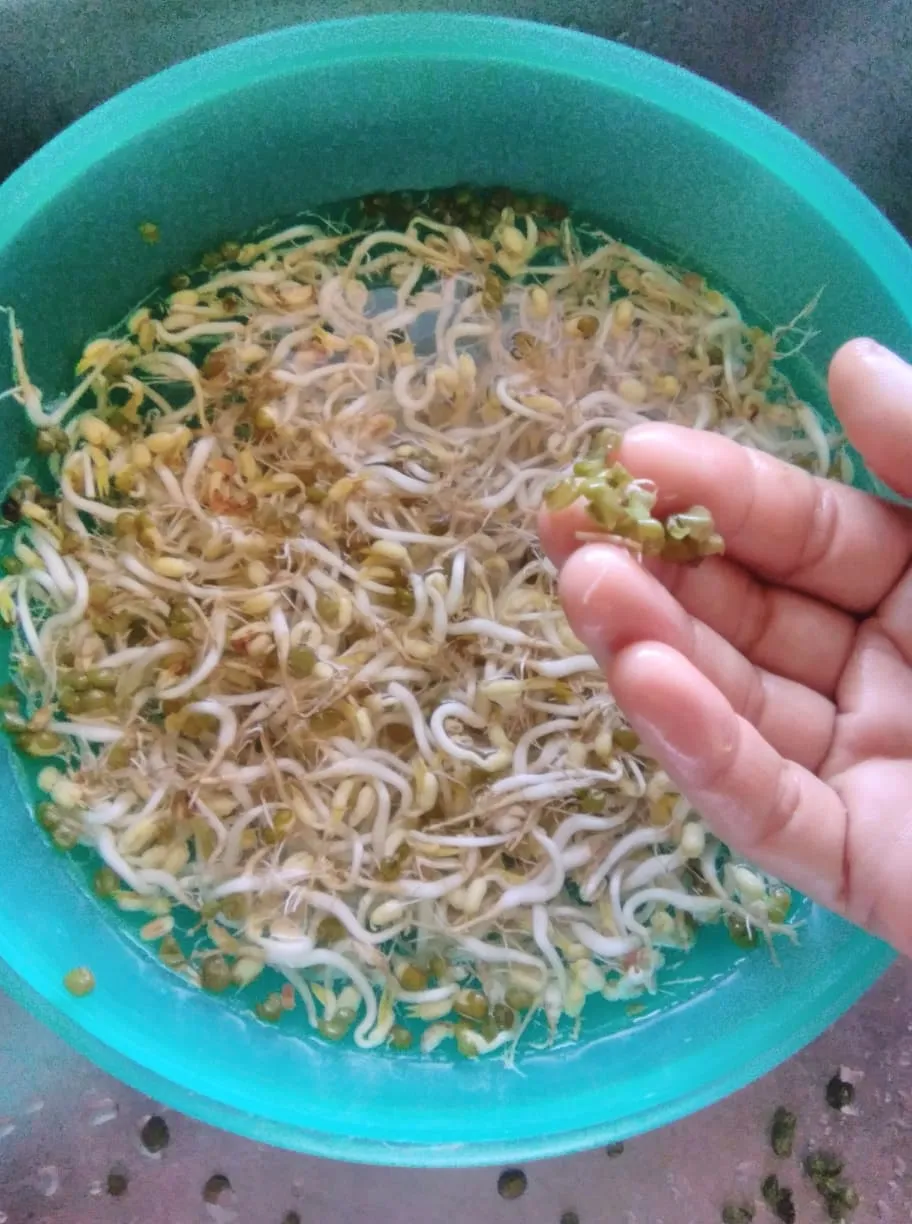
Después de enjuagarlos bien y sacarle las cascaras los colamos.
After rinsing them well and removing the skins, we strain them.

Y aquí tenemos listos para usar los deliciosos y nutritivos germinados!! Espero los hagan y los disfruten de todos sus beneficios incorporándolos a sus comidas.
And here we have the delicious and nutritious sprouts ready to use! I hope you make them and enjoy all their benefits by incorporating them into your meals.
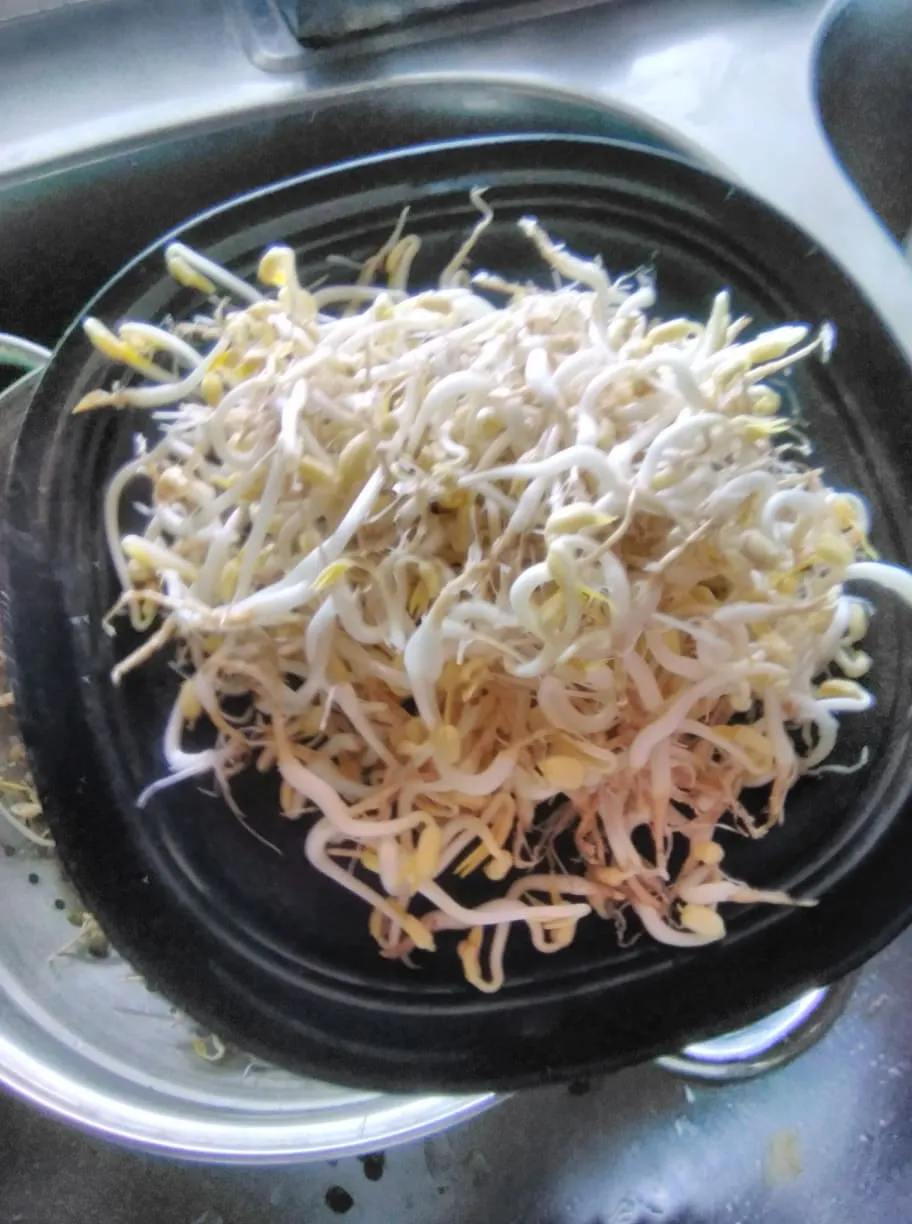
MUCHAS GRACIAS POR LEER, BENDICIONES PARA TODOS, UN SALUDO MUY ESPECIAL PARA LOS AMIGOS DE SEMILLAS DE AMOR Y LAS GRACIAS PARA @JOSDELMY POR SU GUÍA EN ESTE CAMINO EN LA COMUNIDAD HIVE.
THANK YOU VERY MUCH FOR READING, BLESSINGS TO ALL, A VERY SPECIAL GREETING TO THE FRIENDS OF SEMILLAS DE AMOR AND THANKS TO @JOSDELMY FOR HIS GUIDANCE ON THIS PATH IN THE HIVE COMMUNITY.
TODAS LAS FOTOS EN ESTE POST SON DE MI PROPIEDAD, TRADUCIDO AL INGLES POR DEELP.
ALL PHOTOS IN THIS POST ARE MY PROPERTY, TRANSLATED TO ENGLISH BY DEELP.
